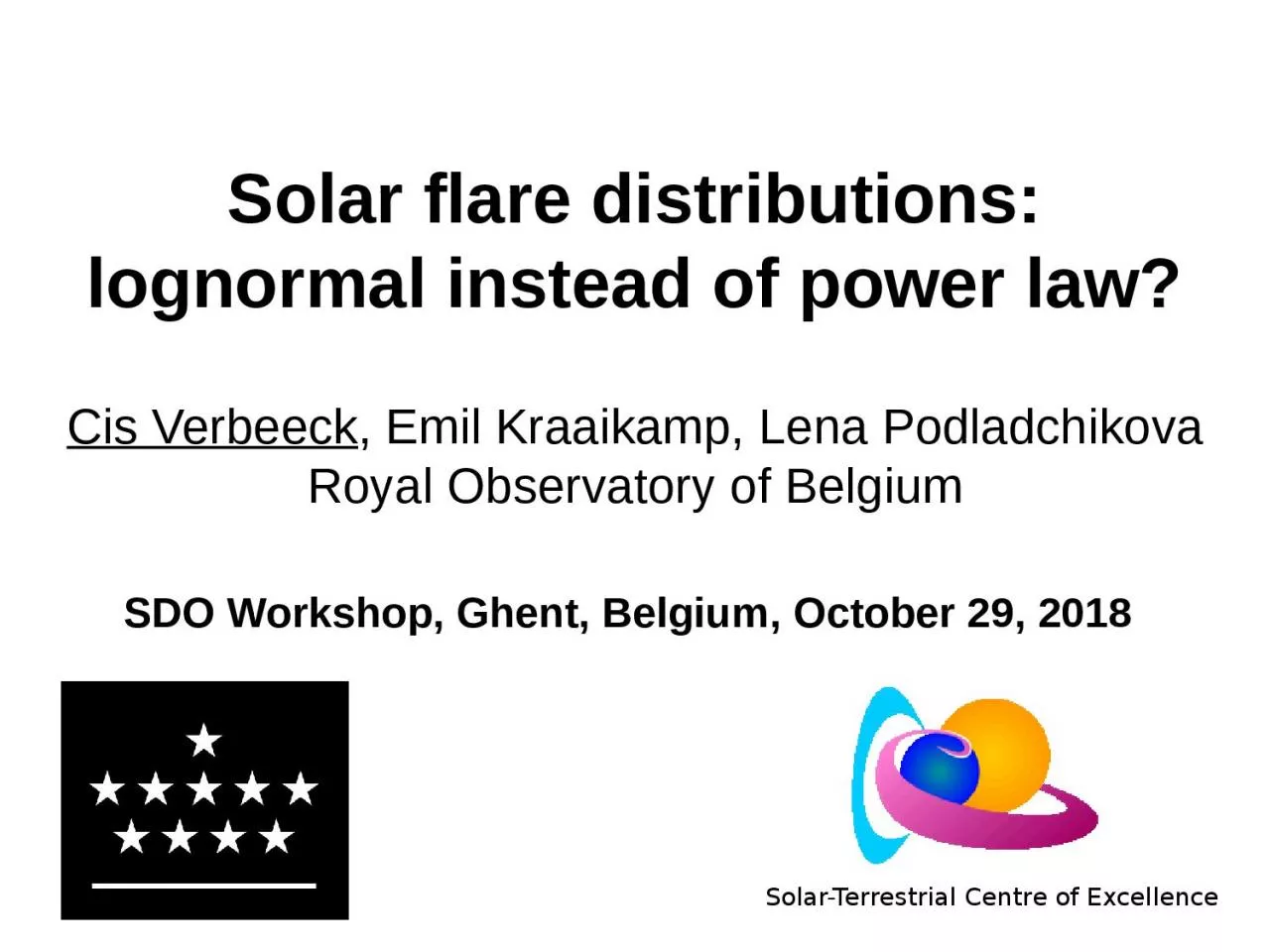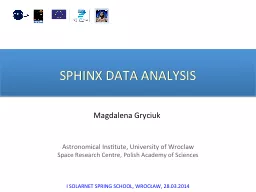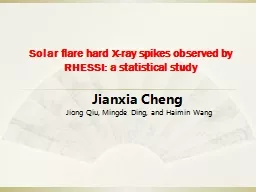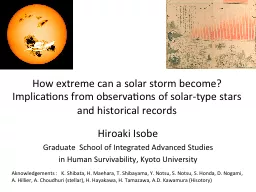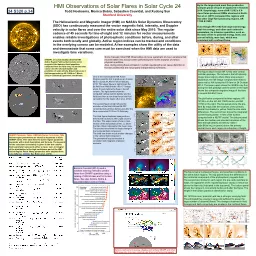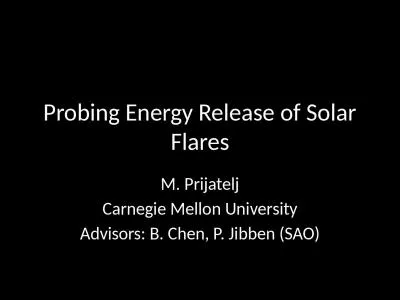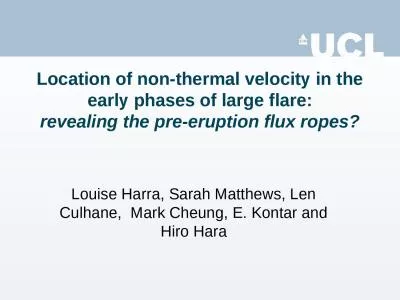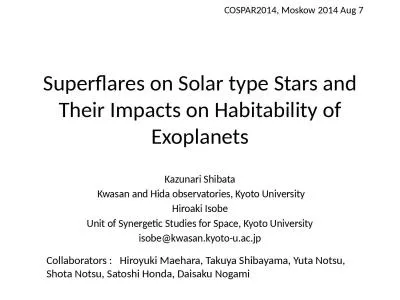PPT-Solar flare distributions:
Author : BlueberryBelle | Published Date : 2022-08-03
lognormal instead of power law SolarTerrestrial Centre of Excellence Cis Verbeeck Emil Kraaikamp Lena Podladchikova Royal Observatory of Belgium SDO Workshop
Presentation Embed Code
Download Presentation
Download Presentation The PPT/PDF document "Solar flare distributions:" is the property of its rightful owner. Permission is granted to download and print the materials on this website for personal, non-commercial use only, and to display it on your personal computer provided you do not modify the materials and that you retain all copyright notices contained in the materials. By downloading content from our website, you accept the terms of this agreement.
Solar flare distributions:: Transcript
Download Rules Of Document
"Solar flare distributions:"The content belongs to its owner. You may download and print it for personal use, without modification, and keep all copyright notices. By downloading, you agree to these terms.
Related Documents

